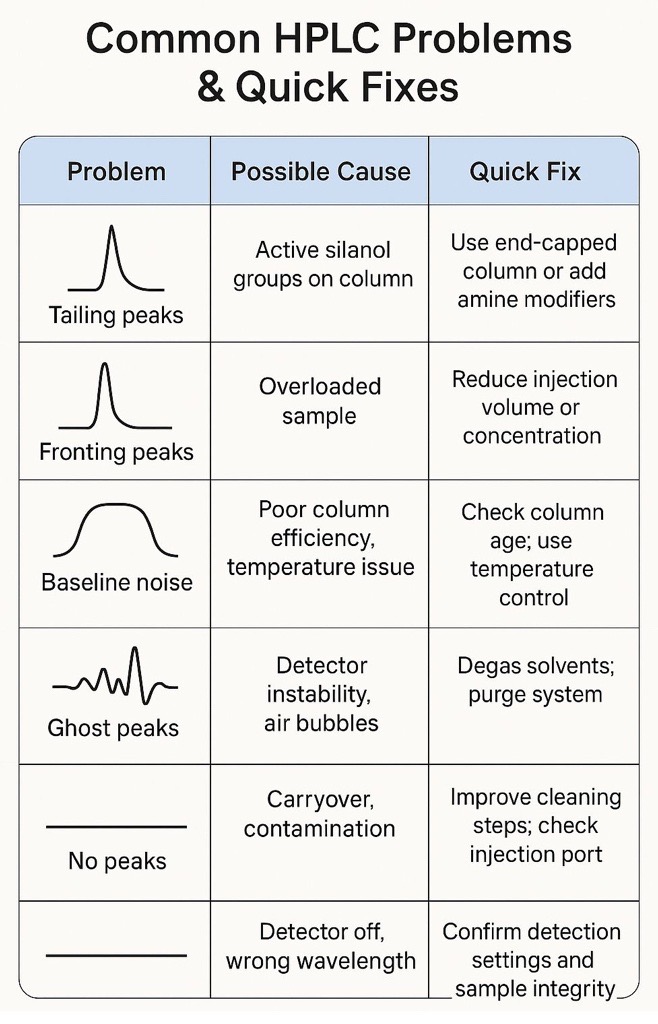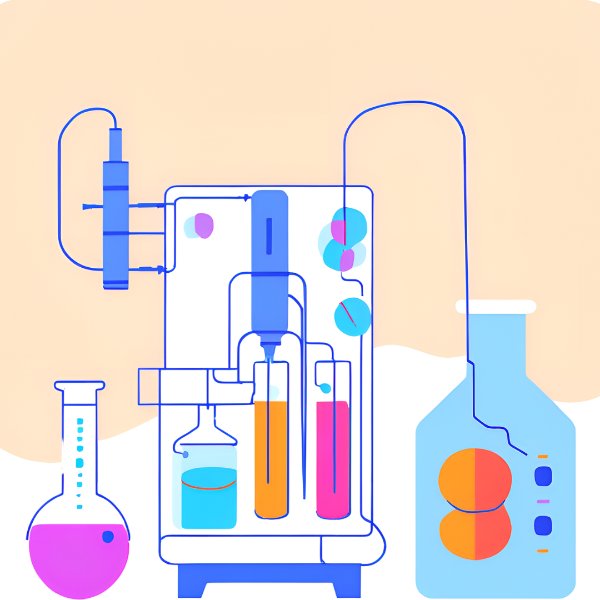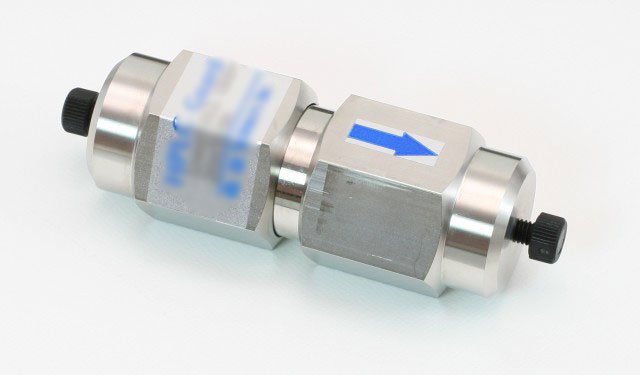Questions
1. Pump Calibration
Q1. What is the acceptance criterion for flow rate accuracy?
A1. The flow rate should be within ±2.0% of the set value.
Q2. How is flow rate accuracy measured in HPLC?
A2. By collecting HPLC grade water in a calibrated volumetric flask and recording the time to fill a known volume using a stopwatch. Flow rate = Volume (mL) / Time (min).
Q3. What is the acceptance criterion for flow rate consistency?
A3. The %RSD of retention time of caffeine should be NMT 1.0%.
Q4. How is flow rate consistency evaluated?
A4. By injecting 10 ppm caffeine solution six times and calculating the %RSD of the retention times.
Q5. What is meant by compositional accuracy?
A5. It refers to the accuracy of gradient composition delivery. Measured using 0.25% acetone in water and recording absorbance changes.
Q6. What is the delay volume limit for the pump system?
A6. The delay volume should be NMT 1.0 mL.
---
2. Autosampler Calibration
Q7. What is the acceptable range for injection volume accuracy?
A7. The average volume for 10 injections should be 20 ± 0.4 µL.
Q8. How is injection volume accuracy determined?
A8. By weighing the HPLC vial before and after 10 injections and using the difference to calculate average injection volume.
Q9. What is the limit for injection volume precision?
A9. %RSD should not be more than 1.0%.
Q10. How is injection volume linearity evaluated?
A10. By injecting 5, 10, 20, 50, and 100 µL and plotting the peak area vs. volume. R-square should be NLT 0.9990.
Q11. What is the acceptance criterion for autosampler temperature?
A11. The measured temperature should be within ±2°C of the set temperature.
---
3. Column Oven Calibration
Q12. What are the required set temperatures for column oven calibration?
A12. 60°C, 50°C, 30°C, 20°C, and 10°C.
Q13. What is the acceptance limit for column oven temperature accuracy?
A13. The measured temperature should be within ±2°C of the set temperature.
Q14. How is the temperature measured?
A14. Using a calibrated probe with a digital thermometer.
---
4. Detector Calibration
Q15. How is wavelength accuracy evaluated?
A15. Using known UV maxima and minima, such as Maxima 273 ± 2 nm, Maxima 205 ± 2 nm, and Minima 245 ± 2 nm.
Q16. What is the acceptance criterion for detector linearity?
A16. R-square (correlation coefficient) should be NLT 0.9990.
Q17. What is the typical injection volume used for detector calibration?
A17. 10 µL.
Q18. What is the standard mobile phase composition for calibration?
A18. Methanol:Water (50:50 v/v).
No answers yet.
No answers yet.

No answers yet.
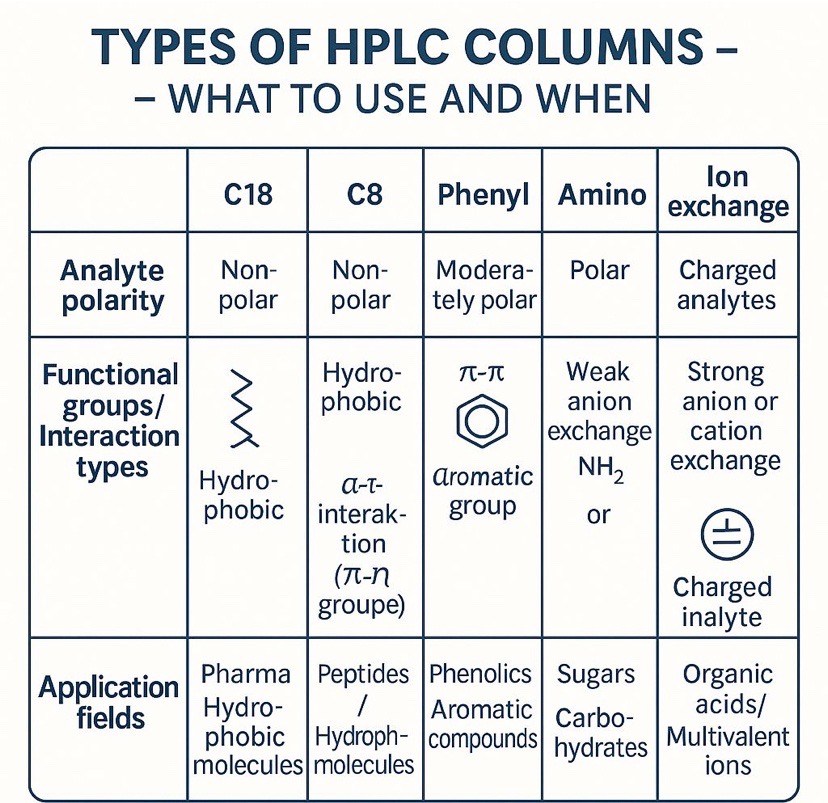
Types of HPLC Columns –What to Use and When
Column choice isn't just about C18! ?
From amino to phenyl, each stationary phase brings something unique to your separation.
✅ Here's a visual guide to help you choose the right column based on:
• Analyte polarity
• Functional groups
• Interaction types
• Application fields (e.g., sugars, peptides, phenolics, pharmaceuticals)
? Choosing the wrong column can cost you resolution, time, and sample integrity. Don’t waste injections — get it right the first time!
? What’ss your favorite go-to column, and what do you use it for?
Post by Ahmed Newehy
C18 classical and friendly hahaahha

No answers yet.
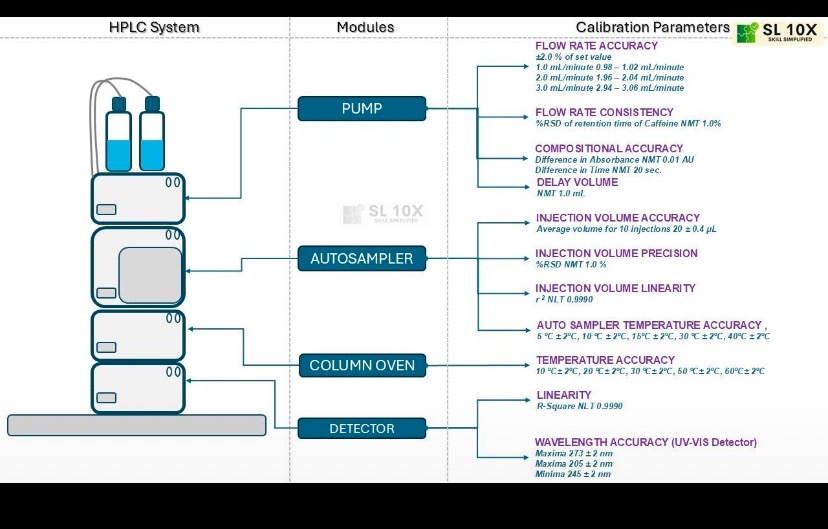
High-Performance Liquid Chromatography (HPLC) is more than just a tool — it's the backbone of accurate pharmaceutical testing. But without proper calibration, even the best system can lead you astray. Here's why calibration matters, and how to do it right.
Why HPLC Calibration Is a Must
Trust Your Data
Imagine spending hours running tests—only to realize your results are off. Calibration ensures your data is accurate and consistent, every single time.
Stay on the Right Side of Regulations
The FDA and EMA aren’t just suggesting calibration—they require it. Validated, calibrated systems are a must for passing audits and staying compliant.
Protect Product Quality
In pharma, quality is everything. Calibration helps you avoid unexpected errors that could compromise patient safety and company reputation.
What Needs to Be Calibrated?
Pump Calibration
Flow Rate Accuracy: Use a certified flow meter to check that your flow rate matches the set value.
Pressure Consistency: Keep an eye on system pressure—unexpected changes might signal deeper issues.
Detector Calibration
Wavelength Accuracy: Verify with standard calibration filters to ensure your detector is locked onto the correct wavelength.
Linearity Check: Confirm your detector’s response is proportional across different concentrations. No surprises, no drifts.
Column Performance
Efficiency & Resolution: Use standard mixtures to check that your column is still separating compounds like a champ.
System Suitability Tests
Before running samples, confirm everything’s working as it should: retention time, peak area, theoretical plates, and more.
Best Practices to Keep Things Running Smoothly
Routine Maintenance = Peace of Mind
Don’t wait for a breakdown. Regular servicing keeps your system—and your confidence—running strong.
Use Certified Standards
Accuracy starts with the right tools. Always rely on certified reference materials for calibration.
Document Everything
Keep a detailed log of every calibration. If something goes wrong, you’ll have a clear trail to track it down.
Train Like It Matters (Because It Does)
A well-trained team is your first line of defense. Make sure everyone handling calibration knows what they’re doing—and why it matters.
great :)
No answers yet.
No answers yet.
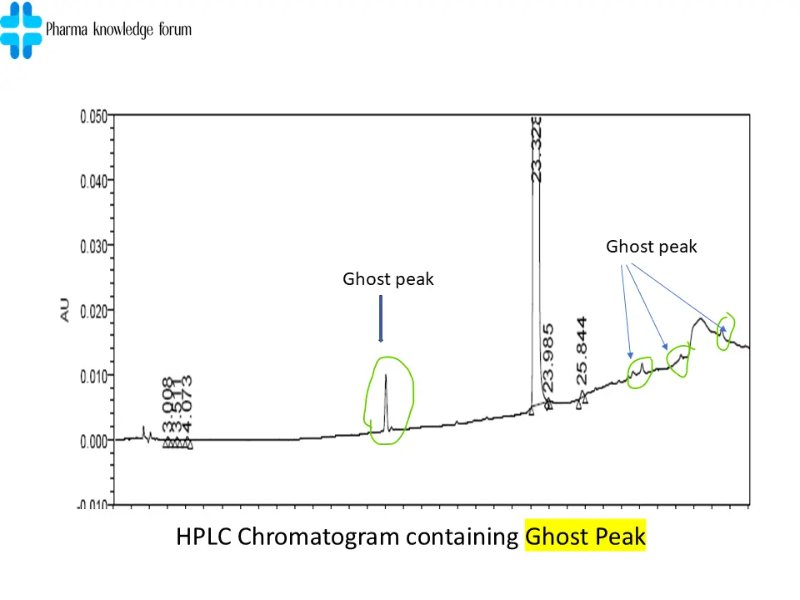
While running a long sequence, I started seeing ghost peaks appear randomly in blanks and sometimes in unrelated samples.
At first, I thought it was carryover, but after thorough needle washes and even changing vials, the issue persisted. I eventually traced it back to mobile phase contamination. I had reused an old acetonitrile bottle and later realized it had absorbed impurities from the environment.
Switching to freshly opened solvent bottles solved the issue. Now I always label solvent bottles with opening dates and discard them regularly.
great :)

causes for baseline drifting
Column temperature fluctuation – Use a thermostat column oven. Use a thermometer to check the accuracy of the set temperature.
Incorrect mobile phase composition – Prepare fresh mobile phase. Check mixer is working for gradient methods.
Contamination of detector flow cell – Flush flow cell with a strong organic solvent. If no improvement is seen, change the flow cell.
Damaged flow cell – Replace flow cell.
Pump outlet blocked – Remove blockage. If no improvement is seen, replace outlet.
Flow rate change – Reset flow rate. Test using liquid flow meter.
Poor column equilibration – Increase column equilibration time. If recently changed mobile phase, purge the system and pump of old solvent with new mobile phase using 20 column volumes.
Retained peaks look like baseline drifts –Use a guard column. Thoroughly flush the column with a strong organic solvent before the next injection.
UV detector not set at maximum absorbance – Use maximum absorbance wavelength of target compound(s)
Reference wavelength of detector is incorrect – Ensure reference wavelength of the detector is different to target compounds.
UV absorbing mobile phase – Use non-UV absorbing HPLC grade solvent.

No peaks found on the chromatogram.
Possible Causes:
Detector not connected or turned on
Leak in the system
Injection volume too low
Column not properly equilibrated
Solutions:
Verify the detector settings and signal connection
Check for leaks at fittings and seals
Increase injection volume or concentration
Allow the column to equilibrate with the mobile phase for at least 10-20 column volumes


